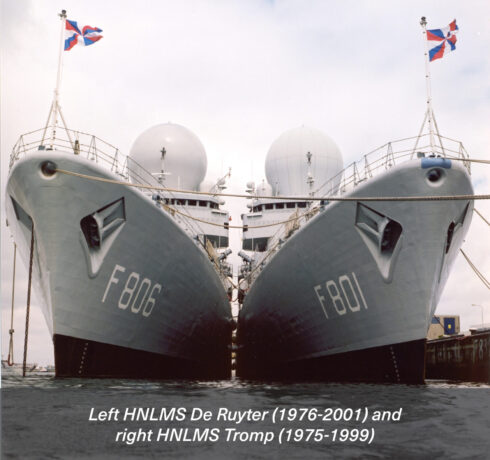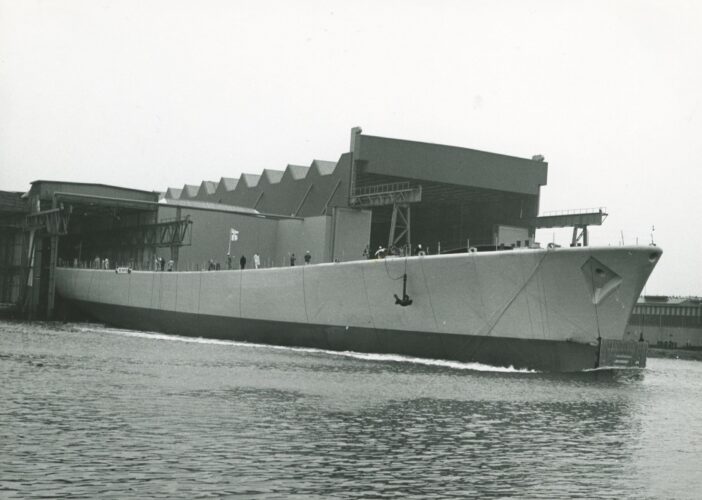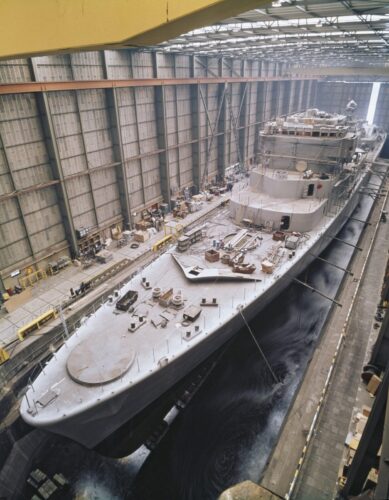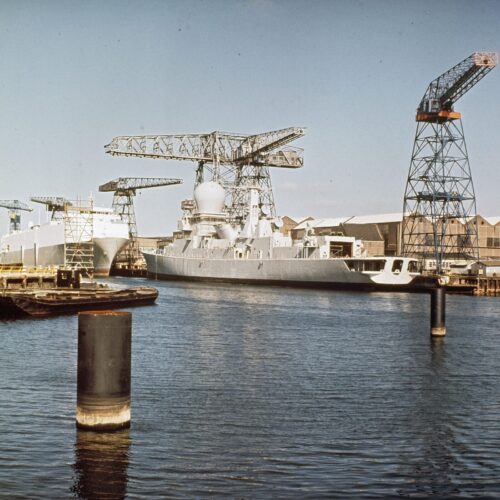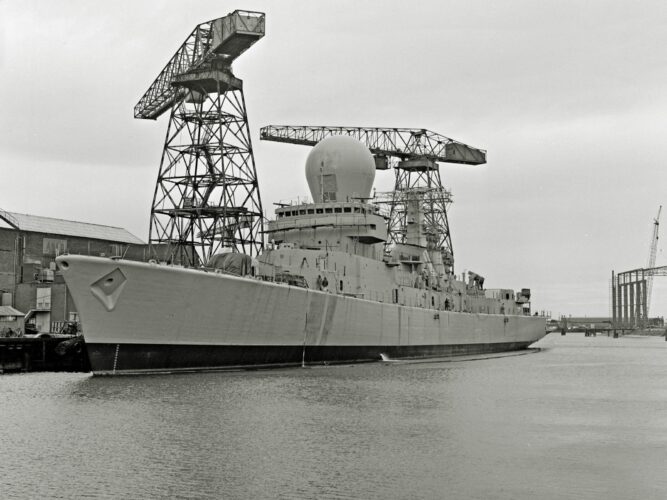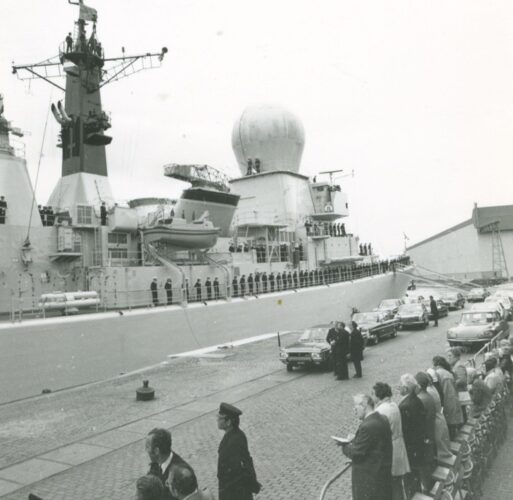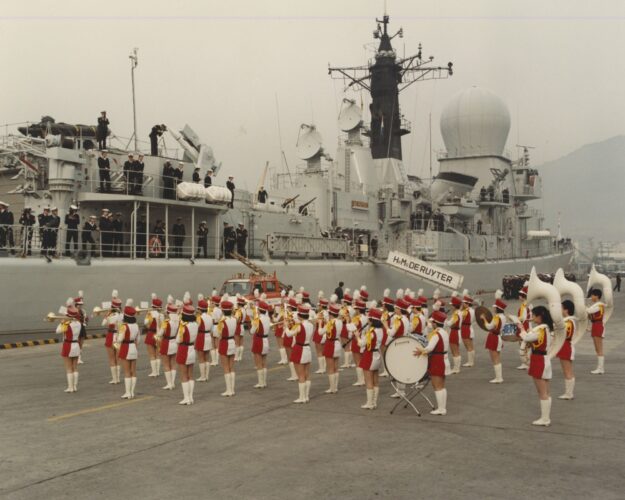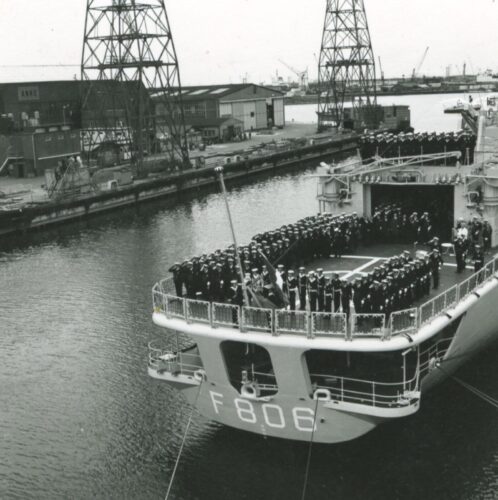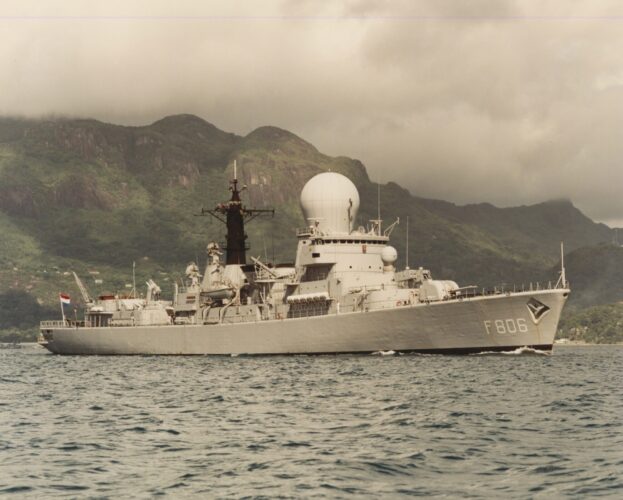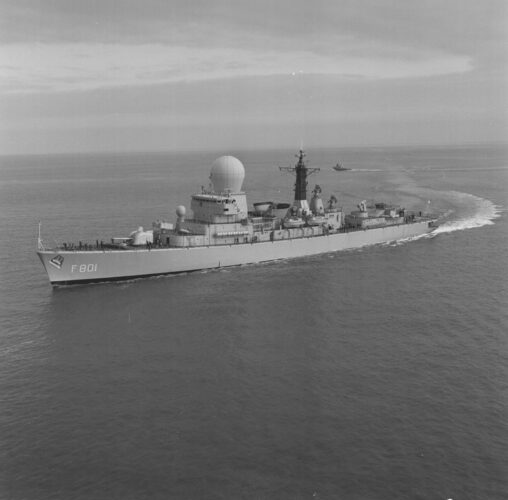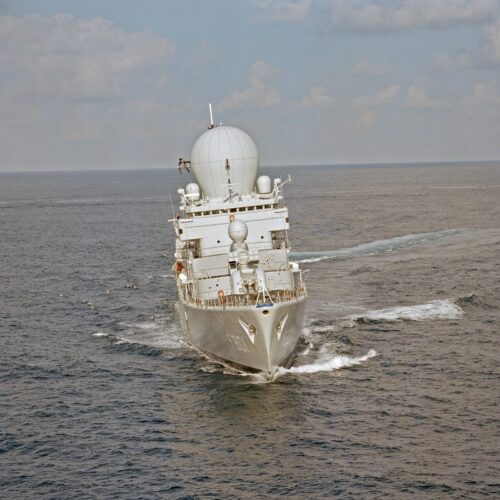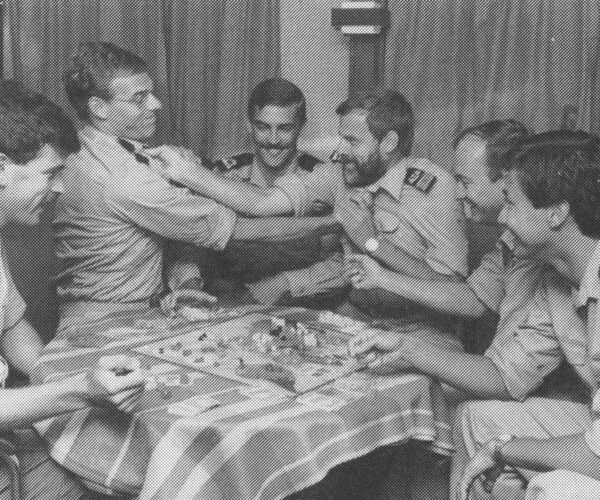 On board the HNLMS De Ruyter
On board the HNLMS De Ruyter
In Navy circles, they were called the Kojaks. This was because they were both equipped with a large, conspicuous orb reminiscent of the bald head of TV sleuth Kojak. The guided weapon frigates built by De Schelde in the early 1970s were highly innovative ships in several respects.
Although he was not involved with the construction of the ships, he still knows them like the back of his hand. As a Navy man in the Netherlands Royal Navy, Arjan Risseeuw served on both the HNLMS Tromp and the HNLMS De Ruyter. He also has childhood memories of seeing the two ships on the outfitting quay in Vlissingen. Back then, he never dared to dream that they would one day become his workplace.
During his officer training at the Royal Naval College in the early eighties, Arjan had his inaugural voyage on board the HNLMS De Ruyter. “You had to get to know the organisation from the bottom up,” he recalls. “In fact, on such a voyage you worked at the same level as a Seaman, and one of the ‘much loved’ tasks was scrubbing the toilet,” he adds with a laugh. He soon realised that the GW frigates were special ships. “That imposingly large sphere contained the very first 3D radar used by the Dutch Royal Navy.”
“For their era, those two ships were very advanced. You can hardly imagine it: that 3D radar had its own computer with a memory of just 64 kilobytes. But it worked fine… When it was spinning, there was so much air displacement that it was wind force 7 inside.” According to Arjan, the two combat ships were the first in the Navy fleet to have an integrated combat system. “The Tromp class was equipped with, among other things; Tartar, Harpoon and Sea Sparrow guided weapon systems, and a double-barrelled 12 cm Bofors cannon.”
“With the 3D sphere, information was collected about possible targets. The computer distributed that data to the specific weapon systems on board for which this information was intended.” At the time, the Tromp class, together with the S-frigates and the L-frigates, formed a new generation. “Nowadays frigates manage their technical systems from an integrated platform; actually the Tromp class was a forerunner in this. It was the first time that data about the ship were managed remotely from a technical centre. It was no longer necessary to have a permanent team of technicians in the engine room.”
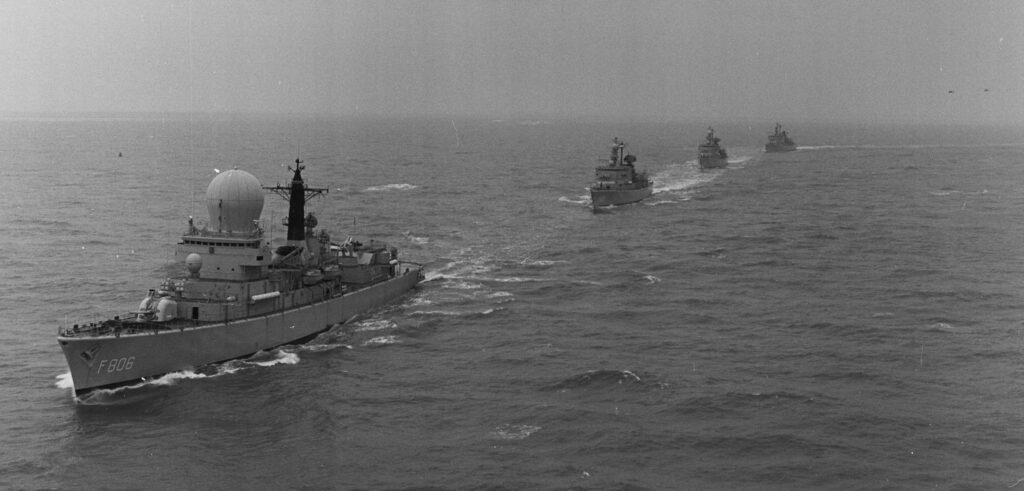 Departure of the HNLMS De Ruyter for the Fairwind 86 squadron voyage, followed by HNLMS Jan van Brakel, HNLMS Van Kinsbergen and HNLMS Callenburgh (from the Netherlands Institute of Military History)
Departure of the HNLMS De Ruyter for the Fairwind 86 squadron voyage, followed by HNLMS Jan van Brakel, HNLMS Van Kinsbergen and HNLMS Callenburgh (from the Netherlands Institute of Military History)
The Tromp class has gone down in history for its modern and innovative ship design. “This was also true for the propulsion. Tromp and De Ruyter were the first Navy ships to use gas turbines for both main propulsion and cruising.” Arjan has fond memories of the Fairwind 86 squadron voyage that he took on the HNLMS De Ruyter in 1986. “It was the first time in a long while that a Dutch Navy squadron had made such a long voyage. It was headed by HNLMS De Ruyter, which was also a staff ship. This meant that the squadron staff led by the rear admiral was also on board.”
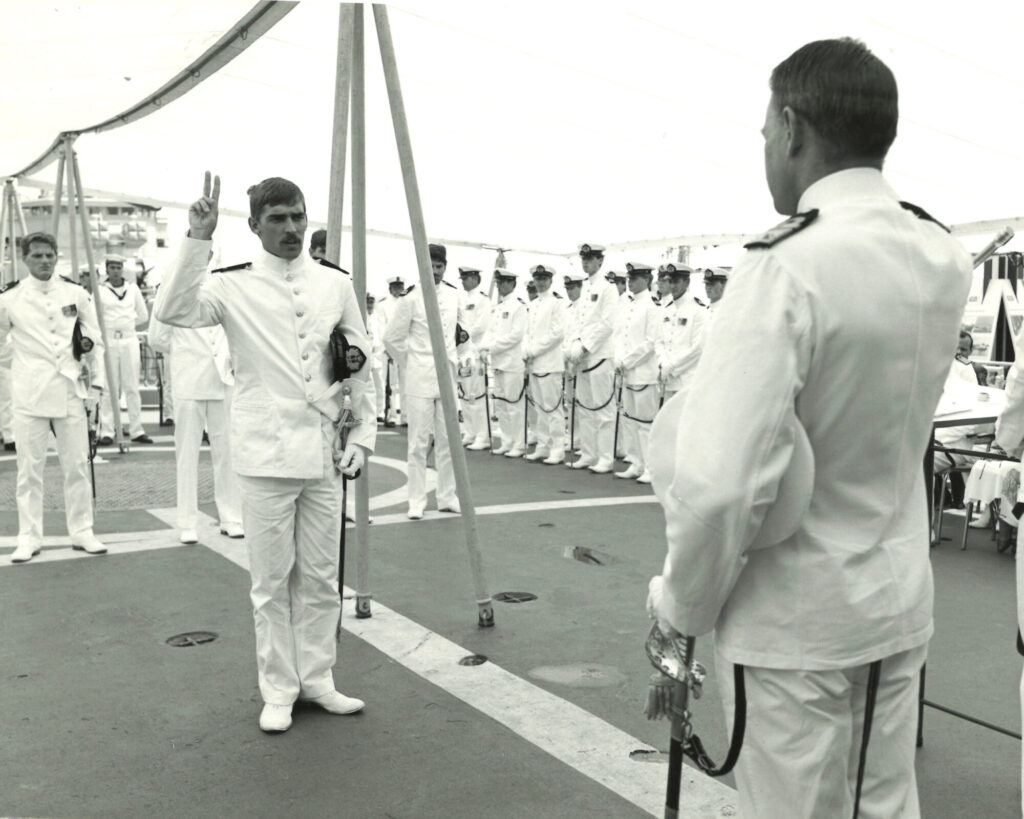 Arjan Risseeuw is sworn in as officer on board the HNLMS De Ruyter.
Arjan Risseeuw is sworn in as officer on board the HNLMS De Ruyter.
“Of the more than forty officers on the ship, I was the youngest, fresh out of the Royal Naval College. It was a wonderful time. We criss-crossed the Far East for six months. In Surabaya I was sworn in as an officer on board.” Smiling, he adds: “It was also quite a feudal time. The highest rank on board had their own chair at the longroom dining table, and if anyone else sat on it, he would be dismissed by the steward… The youngest officers took turns on bar duty. If a superior officer came in and you were behind the bar, you were expected to know exactly what he wanted to drink. You had to act quickly, because the drink had to be ready the moment he sat down…”
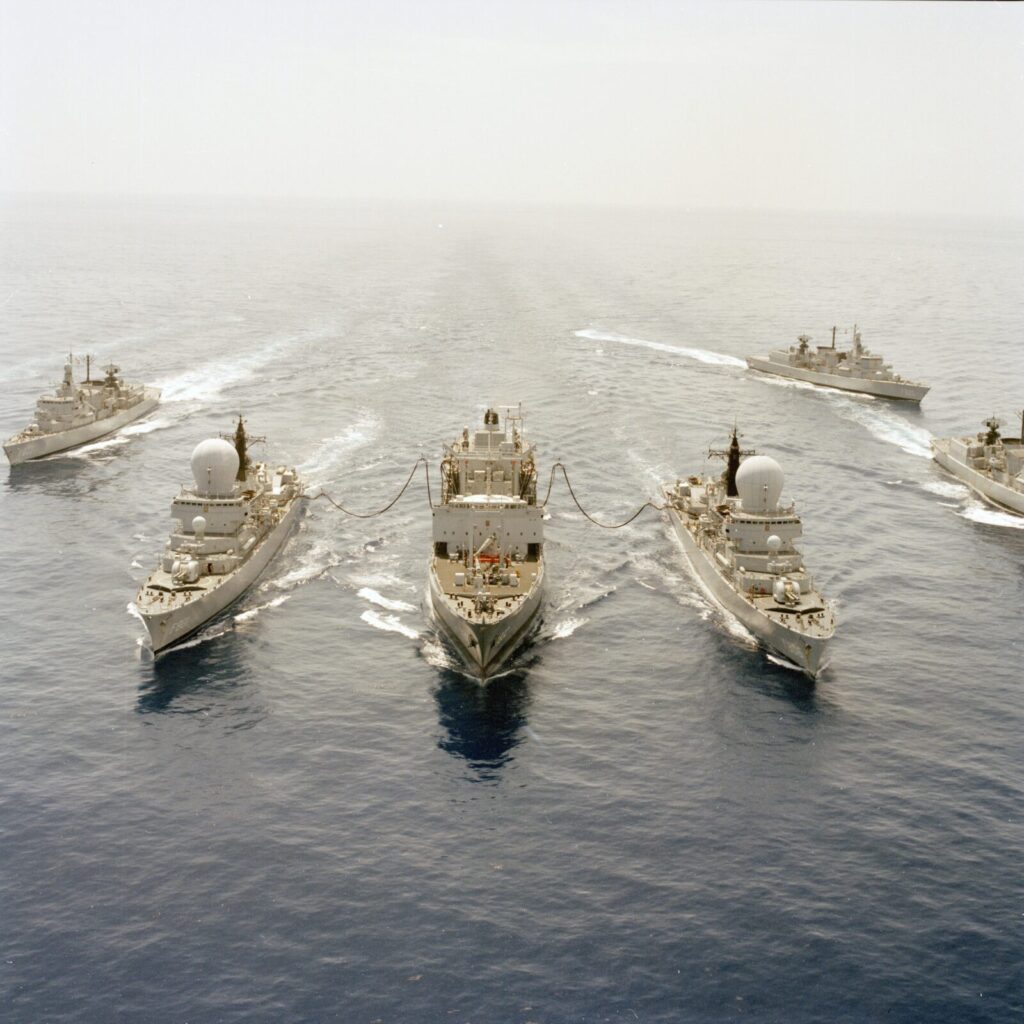 The squadron in the Caribbean. The two guided weapon frigates HNLMS Tromp (1975-1999) and HNLMS De Ruyter (1976-2001) are pictured simultaneously loading oil from the supply ship HNLMS Zuiderkruis (1975-) (from the Netherlands Institute of Military History).
The squadron in the Caribbean. The two guided weapon frigates HNLMS Tromp (1975-1999) and HNLMS De Ruyter (1976-2001) are pictured simultaneously loading oil from the supply ship HNLMS Zuiderkruis (1975-) (from the Netherlands Institute of Military History).
*Carousel photos from the Netherlands Institute of Military History

